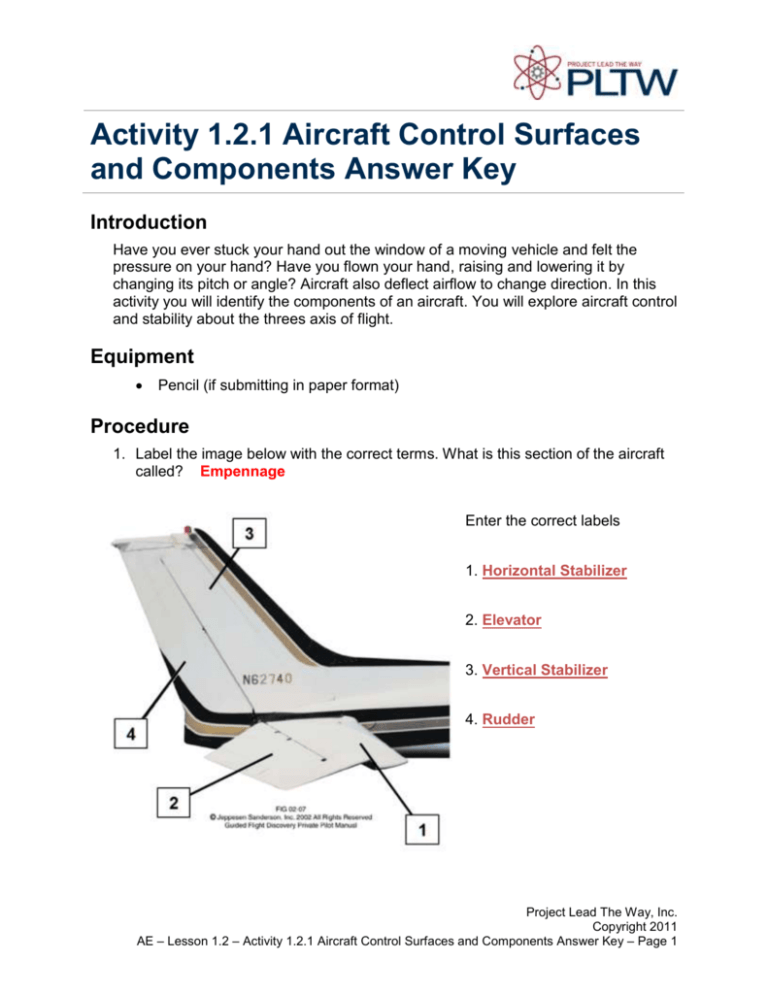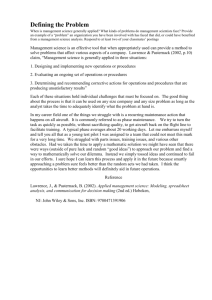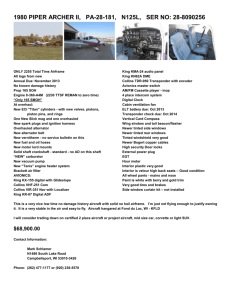Aircraft Control Surfaces & Components Answer Key
advertisement

Activity 1.2.1 Aircraft Control Surfaces and Components Answer Key Introduction Have you ever stuck your hand out the window of a moving vehicle and felt the pressure on your hand? Have you flown your hand, raising and lowering it by changing its pitch or angle? Aircraft also deflect airflow to change direction. In this activity you will identify the components of an aircraft. You will explore aircraft control and stability about the threes axis of flight. Equipment Pencil (if submitting in paper format) Procedure 1. Label the image below with the correct terms. What is this section of the aircraft called? Empennage Enter the correct labels 1. Horizontal Stabilizer 2. Elevator 3. Vertical Stabilizer 4. Rudder Project Lead The Way, Inc. Copyright 2011 AE – Lesson 1.2 – Activity 1.2.1 Aircraft Control Surfaces and Components Answer Key – Page 1 2. Label the image below with the correct terms. Enter the correct labels 1. Aileron 2. Wing 3. Cockpit 4. Fuselage 5. Powerplant 6. Flaps 3. Label the image with the following information: a. Draw the three axes. b. Label each axis correctly. c. Label the correct name of the motion for each axis. d. Label the correct motion control for each axis. Axis: Vertical Motion: Yaw Control: Rudder Pilot: Rudder Pedals Axis: Longitudinal Motion: Roll Control: Ailerons Pilot: Yoke twist left or right Axis: Lateral Motion: Pitch Control: Elevator Pilot: Yoke forward or aft Project Lead The Way, Inc. Copyright 2011 AE – Lesson 1.2 – Activity 1.2.1 Aircraft Control Surfaces and Components Answer Key – Page 2 4. A pilot wishes to make a descending turn to the right. Describe what position the control components will need to be in and what motions the pilot will input to make these components react. A turn requires ailerons. A turn to the right will require the right aileron to be deflected up. The left aileron will be down. An ascent or descent requires the elevator to be deflected. A descent means that the elevator will be deflected downward. The pilot will need to twist the yoke to the right while pushing the yoke forward. 5. Describe what a flap does and where it is located on an aircraft. Flaps are located closest to the fuselage and are deployed downward equally on the left and right wing to slow the aircraft while producing more lift. Project Lead The Way, Inc. Copyright 2011 AE – Lesson 1.2 – Activity 1.2.1 Aircraft Control Surfaces and Components Answer Key – Page 3 Conclusion 1. What aircraft have you observed that have components arranged differently or that are missing specific components? Answers will vary. Examples include aircraft with canard wings attached near the nose instead of horizontal stabilizers; gyrocopters; helicopters or propellers facing rearward. 2. What improvements would impact aircraft component design? Answers will vary. For example, lighter and stronger materials will lighten the aircraft, requiring less lift and allowing a decrease in wing size. Another improvement could involve enhanced pilot controls (e.g., joystick or arm motion tracking). Project Lead The Way, Inc. Copyright 2011 AE – Lesson 1.2 – Activity 1.2.1 Aircraft Control Surfaces and Components Answer Key – Page 4





